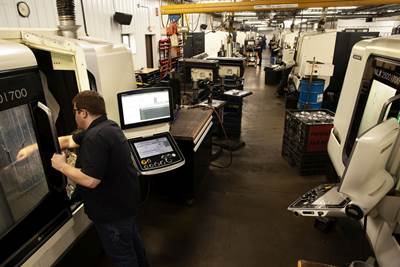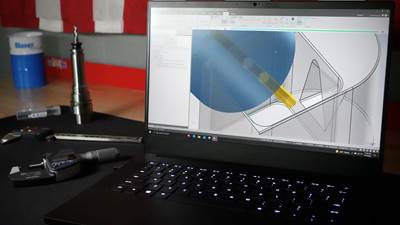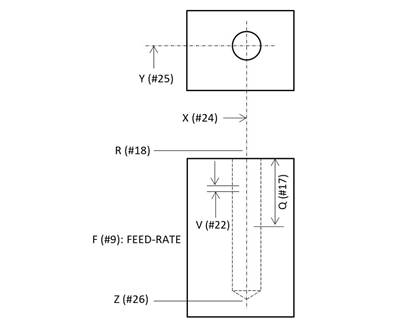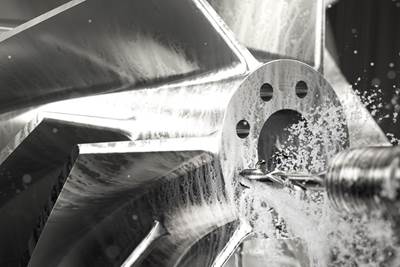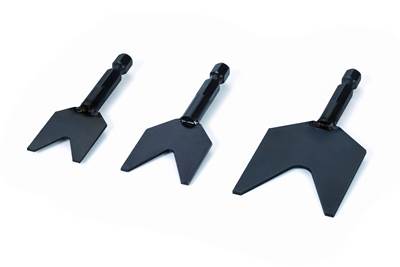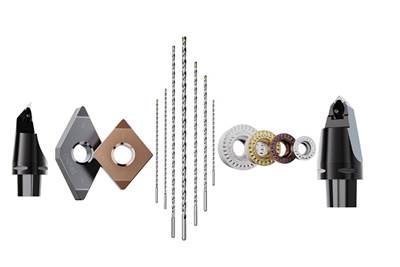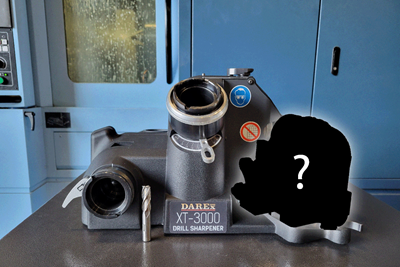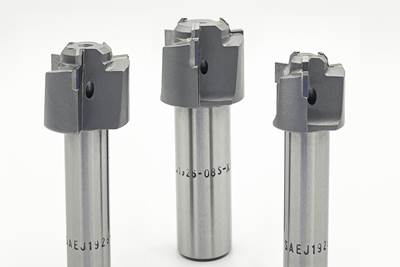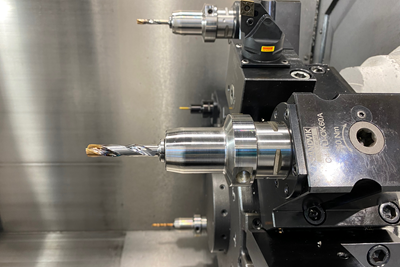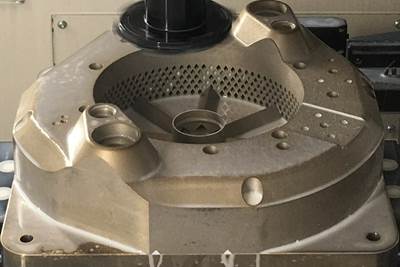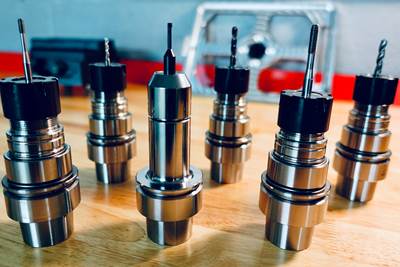ESSENTIAL READING
VIEW ALLHow to Turn Machine Shop Downtime Into Process Expertise
To take advantage of a lull in business, JR Machine devised a week-long cutting tool event that elevated the shop’s capabilities with aerospace alloys.
Read MoreHow to Tackle Tough Angled Pocket Milling With Two Tools
Milling a deep pocket with a tight corner radius comes with unique challenges, but using both a flat bottom drill and a necked-down finishing tool can help.
Read MoreChoosing Your Carbide Grade: A Guide
Without an international standard for designating carbide grades or application ranges, users must rely on relative judgments and background knowledge for success.
Read MoreCutting Tool Technology Aids Lights-Out Machining Applications
These features can help improve cutting tool stability, standardize cutting performance and extend tool life, enabling shops to confidently run unattended shifts.
Read MoreHow to Improve Peck Drilling Canned Cycles
Most CNCs don’t have a canned cycle for machining deep holes into malleable materials. Here’s what you do.
Read MoreTips for Thread Milling Tricky Materials
Compared to tapping, thread-milling technology offers advantages for creating threads in challenging materials, such as tool steel, stainless steel and high-temperature alloys. Here are a few tips for establishing an effective thread-milling process in those materials.
Read MoreLatest Holemaking News And Updates
Sandvik Coromant Drill Provides High Hole Integrity
CoroDrill 860 solid carbide drill is optimized for drilling in nickel-based, HRSA materials.
Read MoreTungaloy Key Bits Improve Drill Body Service Life
The KHS key bits are designed to enable easy measuring of the drill head release torque.
Read MoreBig Daishowa Enhances Boring Tools With Vibration Damping
Smart Damper technology shortens the distance from the damping mechanism to the cutting edge, which is the source of vibration.
Read MoreSeco Tooling Lineup Promotes Optimized Part Processing
The company’s expanded tooling lineup is aimed at applications ranging from general ISO turning to high-volume hard turning and deep-hole drilling.
Read MoreDarex Adds End Mill Attachment to Drill Sharpener
This LEX600 end mill attachment enables users to sharpen the primary and secondary grind on the tips of two-, three- or four-fluted end mills up to 5/8".
Read MoreScientific Cutting Tools' Port Tools Provide Smooth Surface Finish
The AS5202-X and SAEJ1926-X series of port tools are ideal for nonstandard thread minor diameters and lengths.
Read MoreFeatured Posts
Form Tapping Improves Tool Life, Costs
Moving from cut tapping to form tapping for a notable application cut tooling costs at Siemens Energy and increased tool life a hundredfold.
Read More10 Ways Additive Manufacturing and Machining Go Together and Affect One Another
Forget “additive versus subtractive.” Machining and metal additive manufacturing are interconnected, and enhance the possibilities for one another. Here is a look at just some of the ways additive and machining interrelate right now.
Read MoreNew Machining Technology Works With Old to Restore WWII Submarine
A set of donated boring bars that can be used in a 1954 boring head will enable volunteer machinists to recreate a pair of binoculars for the USS Pampanito.
Read MoreHow to Turn Machine Shop Downtime Into Process Expertise
To take advantage of a lull in business, JR Machine devised a week-long cutting tool event that elevated the shop’s capabilities with aerospace alloys.
Read MoreHow Lowering Torque Improves Tapping Tool Life
Escaping the tap breakage trap requires a long look at torque and the many factors that influence it.
Read MoreHow to Tackle Tough Angled Pocket Milling With Two Tools
Milling a deep pocket with a tight corner radius comes with unique challenges, but using both a flat bottom drill and a necked-down finishing tool can help.
Read MoreFAQ: Holemaking
What Are Carbide Coatings?
Most modern carbide inserts and solid carbide tools are coated with a thin film (between 3 and 20 microns, or 0.0001 to 0.0007 inch). The coating is typically composed of titanium nitride, aluminum oxide and titanium carbon nitride layers. This coating increases the hardness and creates a heat barrier between the cut and the substrate.
What is a counterbore?
Counterboring is a machining operation that will enlarge an existing hole’s diameter to a specified depth. Traditionally, counterboring is done with either a special counterboring tool that has a pilot, or it is done with an end mill. In either case, the diameter of the tool (end mill or counterbore) must match the diameter that is counterbored.
Traditional counterboring is great for smaller holes, but as holes get larger, the cutting tools get more expensive.
What is countersinking?
A countersink is a functional surface upon which a fastener head bears. Because fastener performance is so important, countersink tolerances are critical.
What is a chamfer?
Hole chamfers are usually specified simply to make it easier to insert a screw, pin, bushing, or other assembly component. The component doesn't bear on the chamfer, so diameter and angle tolerances are usually not critical to the part's performance.
Holemaking Supplier Categories
- Deep Hole Drilling Machines (Gun Drilling)
- Boring Tools & Heads for Machining Centers
- Drills
- Drill Bushings
- Fixtured Drilling & Tapping Units
- Boring Tools
- Multi-Spindle Drilling Machines
- CNC Drilling & Tapping
- Radial Arm Drilling Machines
- Drilling Heads/Attachments
- Bench & Column Drilling Machines
- Gundrills
- Boring Tools for Turning Machines
- Reamers
- Drill Chucks

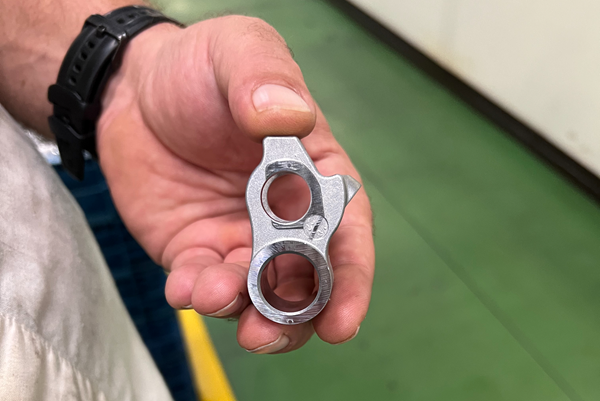

.png;maxWidth=300;quality=90)
